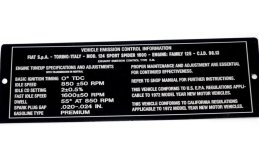kkemerait
New member
On a 1978 124 Spider, my understanding is that correct timing is 0 BTDC. When I set my timing to that, it runs very rough and has very little power accelerating from stand still.
I had checked everything...timing belt, cams, carb, fuel pump, etc.
For lack of anything better to try the other day, I just blindly rotated the distributor and like magic the car idled very smoothly and accelerated from stand still like a jack rabbit.
When I got home, I put a timing light on to see what it was set to .. it was almost 15 or 20 degrees BTDC
Question...Why? Second Question: Should I leave it like that? Third: If not, what could be causing that behavior...what else should I look at or fix?
New plugs, new wires, new points already taken of.
I had checked everything...timing belt, cams, carb, fuel pump, etc.
For lack of anything better to try the other day, I just blindly rotated the distributor and like magic the car idled very smoothly and accelerated from stand still like a jack rabbit.
When I got home, I put a timing light on to see what it was set to .. it was almost 15 or 20 degrees BTDC
Question...Why? Second Question: Should I leave it like that? Third: If not, what could be causing that behavior...what else should I look at or fix?
New plugs, new wires, new points already taken of.
Last edited by a moderator:


